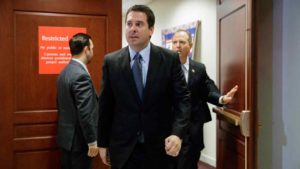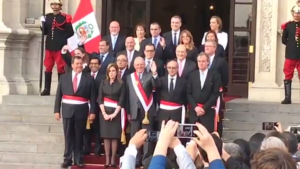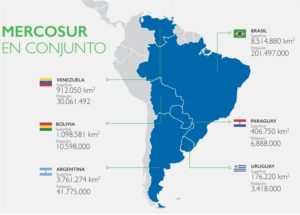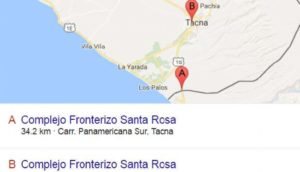WASHINGTON — President Trump on Tuesday ordered an end to the Obama-era program that shields young undocumented immigrants from deportation, calling it an “amnesty-first approach” and urging Congress to pass a replacement before he begins phasing out its protections in six months.
As early as March, officials said, some of the 800,000 young adults brought to the United States illegally as children who qualify for the program, Deferred Action for Childhood Arrivals, will become eligible for deportation. The five-year-old policy allows them to remain without fear of immediate removal from the country and gives them the right to work legally.
Mr. Trump and Attorney General Jeff Sessions, who announced the change at the Justice Department, both used the aggrieved language of anti-immigrant activists, arguing that those in the country illegally are lawbreakers who hurt native-born Americans by usurping their jobs and pushing down wages.
Mr. Trump said in a statement that he was driven by a concern for “the millions of Americans victimized by this unfair system.” Mr. Sessions said the program had “denied jobs to hundreds of thousands of Americans by allowing those same illegal aliens to take those jobs.”
Protests broke out in front of the White House and the Justice Department and in cities across the country soon after Mr. Sessions’s announcement. Democrats and some Republicans, business executives, college presidents and immigration activists condemned the move as a coldhearted and shortsighted effort that was unfair to the young immigrants and could harm the economy.
“This is a sad day for our country,” Mark Zuckerberg, the Facebook founder, wrote on his personal page. “It is particularly cruel to offer young people the American dream, encourage them to come out of the shadows and trust our government, and then punish them for it.”
Former President Barack Obama, who had warned that any threat to the program would prompt him to speak out, called his successor’s decision “wrong,” “self-defeating” and “cruel.”
“Whatever concerns or complaints Americans may have about immigration in general, we shouldn’t threaten the future of this group of young people who are here through no fault of their own, who pose no threat, who are not taking away anything from the rest of us,” Mr. Obama wrote on Facebook.
Both he and Mr. Trump said the onus was now on lawmakers to protect the young immigrants as part of a broader overhaul of the immigration system that would also toughen enforcement.
But despite broad and longstanding bipartisan support for measures to legalize unauthorized immigrants brought to the United States as children, the odds of a sweeping immigration deal in a deeply divided Congress appeared long. Legislation to protect the “dreamers” has also repeatedly died in Congress.
Just hours after the angry reaction to Mr. Trump’s decision, the president appeared to have second thoughts. In a late-evening tweet, Mr. Trump specifically called on Congress to “legalize DACA,” something his administration’s officials had declined to do earlier in the day.
Mr. Trump also warned lawmakers that if they do not legislate a program similar to the one Mr. Obama created through executive authority, he will “revisit this issue!” — a statement sure to inject more uncertainty into the ultimate fate of the young, undocumented immigrants who have been benefiting from the program since 2012.
Conservatives praised Mr. Trump’s move, though some expressed frustration that he had taken so long to rescind the program and that the gradual phaseout could mean that some immigrants retained protection from deportation until October 2019.
The White House portrayed the decision as a matter of legal necessity, given that nine Republican state attorneys general had threatened to sue to halt the program immediately if Mr. Trump did not act.
Months of internal White House debate preceded the move, as did the president’s public display of his own conflicted feelings. He once referred to DACA recipients as “incredible kids.”
The president’s wavering was reflected in a day of conflicting messages from him and his team. Hours after his statement was released, Mr. Trump told reporters that he had “great love” for the beneficiaries of the program he had just ended.
“I have a love for these people, and hopefully now Congress will be able to help them and do it properly,” he said. But he notably did not endorse bipartisan legislation to codify the program’s protections, leaving it unclear whether he would back such a solution.
Mr. Trump’s aides were negotiating late into Monday evening with one another about precisely how the plan to wind down the program would be executed. Until Tuesday morning, some aides believed the president had settled on a plan that would be more generous, giving more of the program’s recipients the option to renew their protections.
But even taking into account Mr. Trump’s contradictory language, the rollout of his decision was smoother than his early moves to crack down on immigration, particularly the botched execution in January of his ban on travelers from seven predominantly Muslim countries.
In addition to the public statement from Mr. Sessions and a White House question-and-answer session, the president was ready on Tuesday with the lengthy written statement, and officials at the Justice and Homeland Security Departments provided detailed briefings and distributed information to reporters in advance.
Mr. Trump sought to portray his move as a compassionate effort to head off the expected legal challenge that White House officials said would have forced an immediate and highly disruptive end to the program. But he also denounced the policy, saying it helped spark a “massive surge” of immigrants from Central America, some of whom went on to become members of violent gangs like MS-13. Some immigration critics contend that programs like DACA, started under Mr. Obama, encouraged Central Americans to enter the United States, hoping to stay permanently. Tens of thousands of migrants surged across America’s southern border in the summer of 2014, many of them children fleeing dangerous gangs.
Sarah Huckabee Sanders, the White House press secretary, indicated that Mr. Trump would support legislation to “fix” the DACA program, as long as Congress passed it as part of a broader immigration overhaul to strengthen the border, protect American jobs and enhance enforcement.
“The president wants to see responsible immigration reform, and he wants that to be part of it,” Ms. Sanders said, referring to a permanent solution for the young immigrants. “Something needs to be done. It’s Congress’s job to do that. And we want to be part of that process.”
Later on Tuesday, Marc Short, Mr. Trump’s top legislative official, told reporters on Capitol Hill that the White House would release principles for such a plan in the coming days, input that at least one key member of Congress indicated would be crucial.
“It is important that the White House clearly outline what kind of legislation the president is willing to sign,” Senator Marco Rubio, Republican of Florida, said in a statement. “We have no time to waste on ideas that do not have the votes to pass or that the president won’t sign.”
The announcement was an effort by Mr. Trump to honor the law-and-order message of his campaign, which included a repeated pledge to end Mr. Obama’s immigration policy, while seeking to avoid the emotionally charged and politically perilous consequences of targeting a sympathetic group of immigrants.
Mr. Trump’s decision came less than two weeks after he pardoned Joe Arpaio, the former Arizona sheriff who drew intense criticism for his aggressive pursuit of unauthorized immigrants, which earned him a criminal contempt conviction.
The blame-averse president told a confidante over the past few days that he realized that he had gotten himself into a politically untenable position. As late as one hour before the decision was to be announced, administration officials privately expressed concern that Mr. Trump might not fully grasp the details of the steps he was about to take, and when he discovered their full impact, would change his mind, according to a person familiar with their thinking who was not authorized to comment on it and spoke on condition of anonymity.
But ultimately, the president followed through on his campaign pledge at the urging of Mr. Sessions and other hard-line members inside his White House, including Stephen Miller, his top domestic policy adviser.
The announcement started the clock on revoking legal status from those protected under the program.
Officials said DACA recipients whose legal status expires on or before March 5 would be able to renew their two-year period of legal status as long as they apply by Oct. 5. But the announcement means that if Congress fails to act, immigrants who were brought to the United States illegally as children could face deportation as early as March 6 to countries where many left at such young ages that they have no memory of them.
Immigration officials said they did not intend to actively target the young immigrants as priorities for deportation, though without the program’s protection, they would be considered subject to removal from the United States and would no longer be able to work legally.
Officials said some of the young immigrants could be prevented from returning to the United States if they traveled abroad.
Immigration advocates took little comfort from the administration’s assurances, describing the president’s decision as deeply disturbing and vowing to shift their demands for protections to Capitol Hill.
Marielena Hincapié, the executive director of the National Immigration Law Center, called Mr. Trump’s decision “nothing short of hypocrisy, cruelty and cowardice.” Maria Praeli, a recipient of protection under the program, criticized Mr. Sessions and Mr. Trump for talking “about us as if we don’t matter and as if this isn’t our home.”
The Mexican foreign ministry issued a statement saying the “Mexican government deeply regrets” Mr. Trump’s decision.
As recently as July, Mr. Trump expressed skepticism about the prospect of a broad legislative deal.
“What I’d like to do is a comprehensive immigration plan,” he told reporters. “But our country and political forces are not ready yet.”
As for DACA, he said: “There are two sides of a story. It’s always tough.”
In: nytimes







